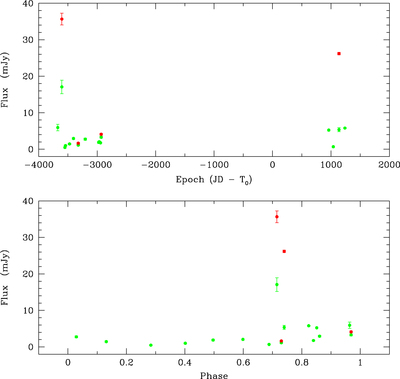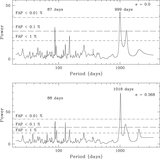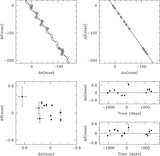Image Details

Caption: Figure 9.
Time variability of DoAr21 at radio wavelengths (see Table 8). Upper panel shows the flux density variation as function of time. The flux density of the primary source (the host star) is in green and the flux density of the secondary source (the detected companion) is in red. This figure shows flux variations of several mJy (between a fraction of a mJy and up to about 6 mJy) in the time span of the observations of more than 4500 days. DoAr21 had two strong outburst, with more than 20 mJy. T0 = 2,457,295.83 days correspond to the time of the passage through the periastron of the orbit of DoAr21B (see Table 6). Lower panel shows the flux variation of DoAr21 as function of the orbital phase of the low-mass stellar companion DoAr21B. A phase equal to 0.5 corresponds to the time at which DoAr21B passes the periastron of its orbit.
Copyright and Terms & Conditions
© 2019. The American Astronomical Society. All rights reserved.











